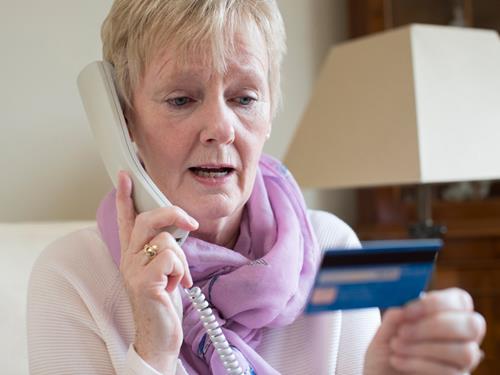Test and Trace: How to know if the call is a scam

As the NHS launches contract tracing for COVID-19, there are growing concerns that fraudsters will seek to use this as an opportunity to acquire peoples’ personal details
Unfortunately, there are already scammers pretending to work for the NHS who have used this in an attempt to gain information and trick people out of their money.
The National Cyber Security Centre has said that the public has reported 600,000 scam emails since the start of the COVID-19 pandemic, all trying to use the concern around the virus to their advantage.
Here we outline what the contact tracing is, and how you can tell if the call, or message, that you receive is real or a scam.
What is contact tracing?
Contact tracing is a way of controlling the spread of the virus. People who have tested positive for the virus will be asked to share the details of anyone that they have been in contact with, and therefore who might have caught it from them.
If you have been tested, and it is positive, the NHS will contact you by text, email or phone call within 72 hours.
You may also be contacted if someone you know, who has been in contact with you, has tested positive. You’ll then be asked to self-isolate for 14 days and given advice on how to do this, what symptoms you should look out for, and what to do if you do develop the illness.
How do I know if I’ve been contacted by the NHS, and not a scammer?
A genuine contact from the NHS service will never request personal details from you upfront.
You will be given a unique ID number that allows you to log on to the NHS Test and Trace website. The only official web address for the NHS Test and Trace service is: https://contact-tracing.phe.gov.uk/ - so if you’re directed to a different address, it is a red flag.
Once you’ve logged in, you will be asked to enter some basic information about yourself including: your name, date of birth, current address, and details of who you’ve been in touch with and where you’ve been. You won’t be asked to share this information upfront over a call or text, so if someone is asking you for it directly, they’re probably a scammer.
If someone else who has tested positive for the virus has been in close contact with you, and you are contacted by the NHS, you will not be asked for any other personal details or payment information in this kind of call or message, nor will you be asked to pass on the details of anyone you’ve been in contact with. You’ll simply be advised on how to self-isolate.
It’s a red flag if you’re asked to hand over this information to a caller or by replying to a message.
Top tips for staying safe
Calls and texts from the NHS Test and Trace service will come from one verified NHS number: 0300 013 5000. There’s still a risk of this number being spoofed, so you should stay wary for other signs of fraud, but calls from any other numbers, or from a withheld number, should be treated as fake.
If you get a call about testing positive for coronavirus, but you haven’t taken a test in the past few days (or have never taken a coronavirus test) then the call is likely a fraudster.
Also, the NHSX app that will alert people that they’ve been in contact with other app users with coronavirus is still being trialled on the Isle of Wight. Because it’s not currently available for the general population, you should avoid downloading any apps that claim they’re contact tracing.
How to report a Test and Trace scam
If you’ve received a message or call that you believe to be a scam, you can report it to Action Fraud. Taking down details such as numbers and email addresses will be useful to them.
What if I’ve already been a victim of a scam?
If you believe that you may have already given over your details to a fraudster, the key is to act swiftly. If you have given away payment or bank details, contact your bank immediately. They’ll help you to protect your accounts.
If you have shared other personal details, stay alert and keep an eye out for unusual activity, such as unexpected bills addressed to you or new accounts opened in your name. You can find the latter by checking your credit report.
9th June 2020